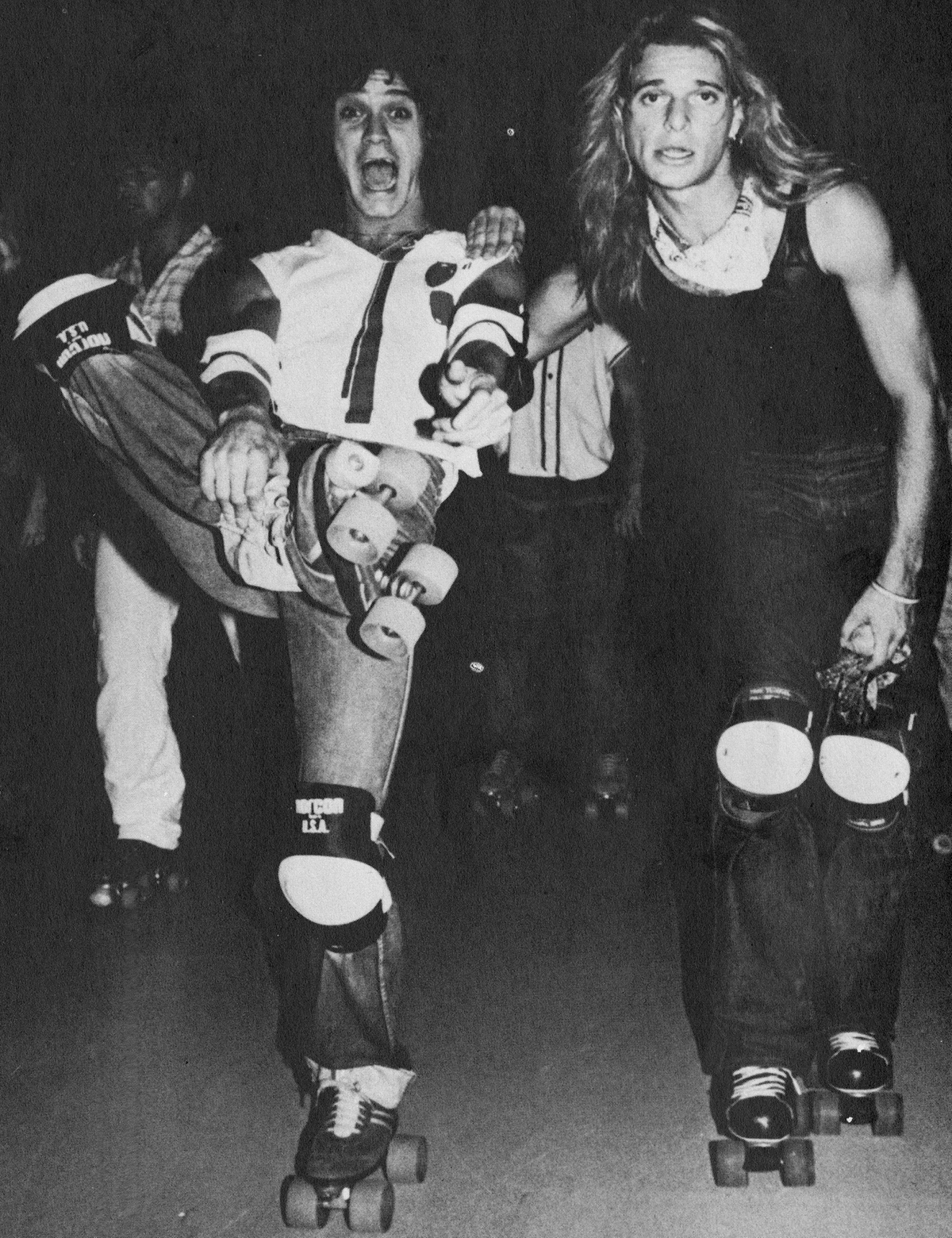With its 20,000-watt stereo system, Flipper’s Roller Boogie Palace, in Los Angeles, was, for two short years at the turn of the 80s, Studio 54 on wheels. Among the regulars at this groovy roller disco: Prince, Cher, Laura Dern, Robin Williams, Jane Fonda, Patrick Swayze, Nile Rodgers, Kareem Abdul-Jabbar, and Arnold Schwarzenegger.
“In 1979 my parents [Bunty and Ian “Flipper” Ross] moved my four siblings and I from London to Los Angeles to open Flipper’s,” writes the model and entrepreneur Liberty Ross in the foreword to her new coffee-table book, Flipper’s Roller Boogie Palace, 1979–1981. “I was just a few weeks old, and they named me Liberty as a result of their impending adventure.”

Set in a former bowling alley in the heart of West Hollywood, the roller disco cost about $1 million to build and featured an uninterrupted mural by the artist John Kosh, who designed thousands of album covers, including the 1969 cover of the Beatles’ Abbey Road.
Flipper’s, which was part velvet-roped nightclub and part uninhibited children’s playhouse, captured a moment before L.A. was little more than traffic jams and influencers. Much as with Studio 54, its glory days were short-lived; after a series of financial missteps and code violations, Flipper’s shut its doors.
The epic nights at the roller disco stuck with Liberty Ross, though. All these years later, she’s decided to bring them back. “The process of putting this book together—digging through photos, seeing how people dressed at that time, how they behaved—has been amazing,” she explained in a recent interview. In addition to this book, Ross has plans to bring Flipper’s back to London and L.A. in 2022.
“We found dedicated [Flipper’s] Facebook pages and Instagram accounts,” Ross said. “I met people online who were so happy to share their memories—‘I had my first kiss there,’ ‘I had my 13th-birthday party there,’ ‘I met Cher there.’”

Nowadays, every public moment seems to be more about showmanship and self-promotion than about enjoyment. But Flipper’s existed in a time before TikTok and Instagram, and a night there was always imbued with the unexpected—Prince wearing only a G-string and performing on a whim, a Go-Go’s concert in the center of the rink.
It produced an off-the-cuff anecdote from a leading actress. “Laura Dern told me a great story about when Flipper’s shut down,” Ross explains. “She and her misfit Flipper’s family [all of whom were young teens at the time] protested outside the boarded-up building [which later became an Esprit], holding hands, crying, and chanting for Flipper’s to come back. I love that visual. I also love the visual of Nile Rodgers skating from his hotel on Sunset Boulevard, down the steep hill of La Cienega, straight into the double doors of Flipper’s!”

But even more poignant than rock-star sightings or young love is Ross’s realization that her parents had created something rare. “No matter where you were from, what color your skin was, or which way you rolled, you were welcome at Flipper’s,” she writes in the book. “It was somewhere everyone felt safe, everyone was family and everyone was included. You were free to be who you wanted to be.”
Flipper’s Roller Boogie Palace, 1979–1981, by Liberty Ross, is published by Idea
Bridget Arsenault is the London Editor for Air Mail

















